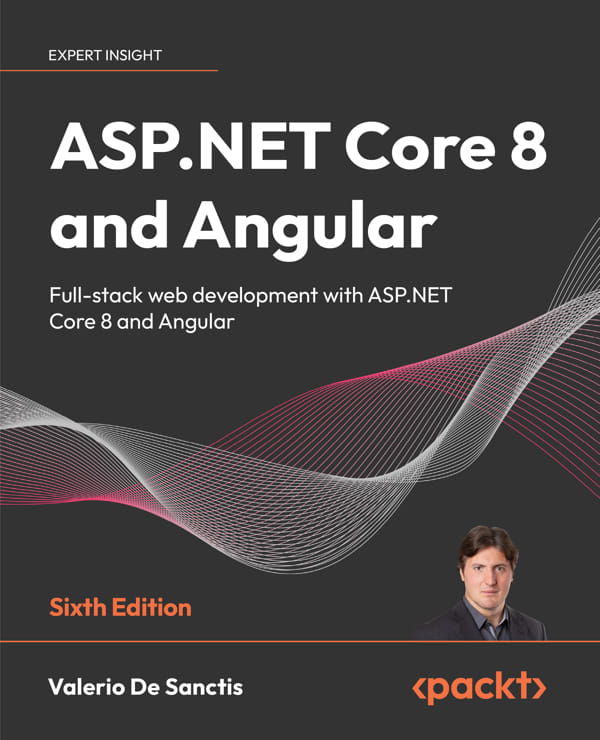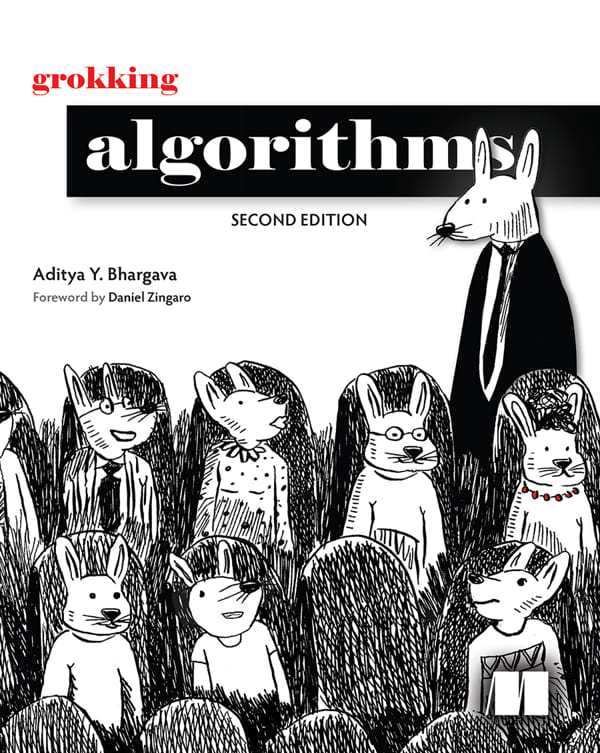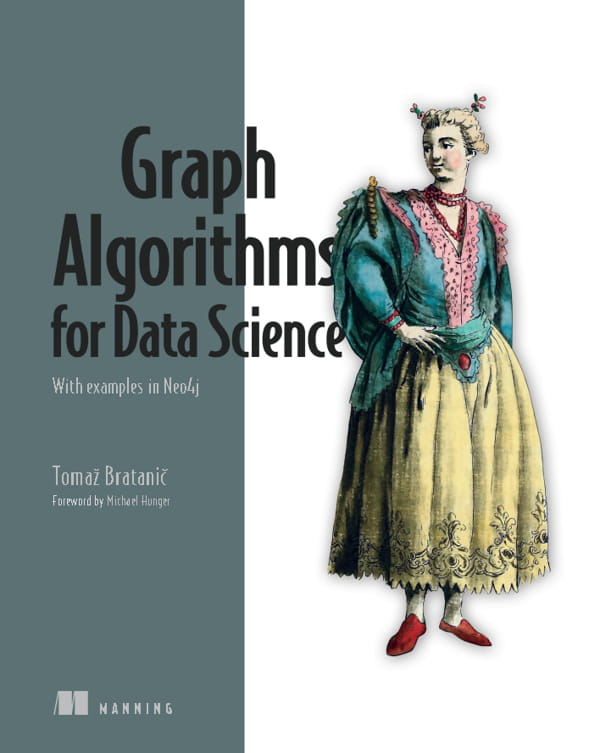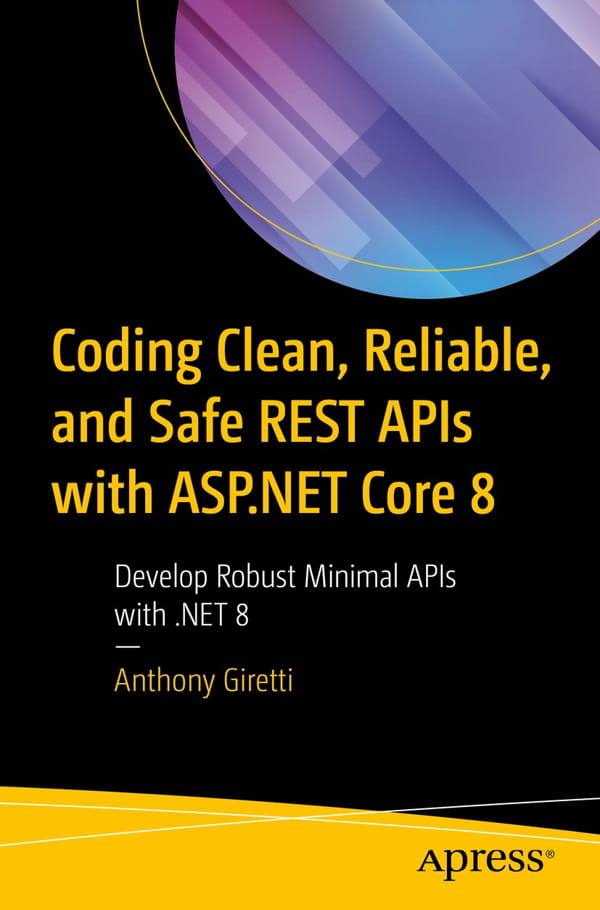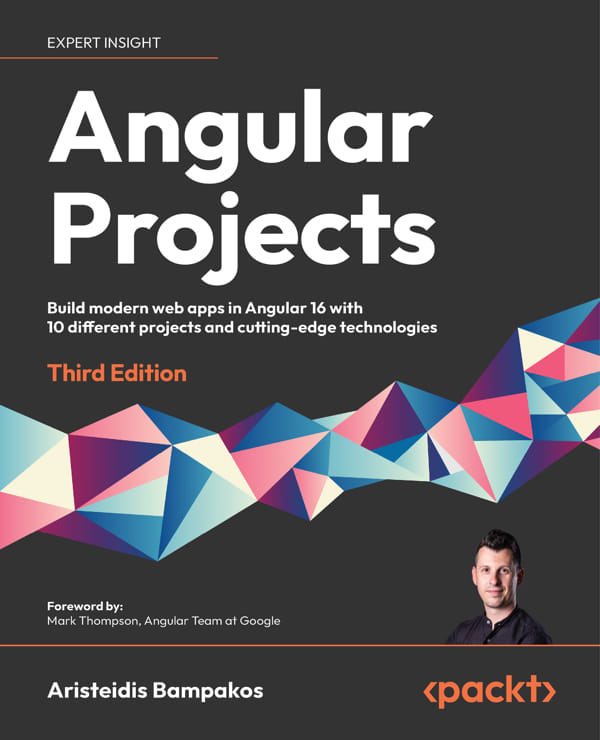C++ How to Program, 10th Edition

ویرایش دهم کتاب چگونگی برنامه نویسی با سی پلاس پلاس دایتل (C++ How to Program)، هم برای خوانندگانی مناسب است که برنامه نویسی بلد نیستند و هم برای کسانی که کمی برنامه نویسی میدانند و یا حتی در این کار حرفه ای هستند. ویرایش دهم این کتاب از استاندارد C++11 و همچنین استاندارد جدید C++14 پیروی میکند.
Table of Contents
Preface xxiii
Before You Begin xxxix
1 Introduction to Computers and C++ 1
1.1 Introduction
1.2 Computers and the Internet in Industry and Research
1.3 Hardware and Software
1.3.1 Moore’s Law
1.3.2 Computer Organization
1.4 Data Hierarchy
1.5 Machine Languages, Assembly Languages and High-Level Languages
1.6 C and C++
1.7 Programming Languages
1.8 Introduction to Object Technology
1.9 Typical C++ Development Environment
1.10 Test-Driving a C++ Application
1.10.1 Compiling and Running an Application in Visual Studio 2015 for Windows
1.10.2 Compiling and Running Using GNU C++ on Linux
1.10.3 Compiling and Running with Xcode on Mac OS X
1.11 Operating Systems
1.11.1 Windows—A Proprietary Operating System
1.11.2 Linux—An Open-Source Operating System
1.11.3 Apple’s OS X; Apple’s iOS for iPhone®, iPad® and iPod Touch® Devices
1.11.4 Google’s Android
1.12 The Internet and the World Wide Web
1.13 Some Key Software Development Terminology
1.14 C++11 and C++14: The Latest C++ Versions
1.15 Boost C++ Libraries
1.16 Keeping Up to Date with Information Technologies
2 Introduction to C++ Programming, Input/Output and Operators
2.1 Introduction
2.2 First Program in C++: Printing a Line of Text
2.3 Modifying Our First C++ Program
2.4 Another C++ Program: Adding Integers
2.5 Memory Concepts
2.6 Arithmetic
2.7 Decision Making: Equality and Relational Operators
2.8 Wrap-Up
3 Introduction to Classes, Objects, Member Functions and Strings
3.1 Introduction
3.2 Test-Driving an Account Object
3.2.1 Instantiating an Object
3.2.2 Headers and Source-Code Files
3.2.3 Calling Class Account’s getName Member Function
3.2.4 Inputting a string with getline
3.2.5 Calling Class Account’s setName Member Function
3.3 Account Class with a Data Member and Set and Get Member Functions
3.3.1 Account Class Definition
3.3.2 Keyword class and the Class Body
3.3.3 Data Member name of Type string
3.3.4 setName Member Function
3.3.5 getName Member Function
3.3.6 Access Specifiers private and public
3.3.7 Account UML Class Diagram
3.4 Account Class: Initializing Objects with Constructors
3.4.1 Defining an Account Constructor for Custom Object Initialization
3.4.2 Initializing Account Objects When They’re Created
3.4.3 Account UML Class Diagram with a Constructor
3.5 Software Engineering with Set and Get Member Functions
3.6 Account Class with a Balance; Data Validation
3.6.1 Data Member balance
3.6.2 Two-Parameter Constructor with Validation
3.6.3 deposit Member Function with Validation
3.6.4 getBalance Member Function
3.6.5 Manipulating Account Objects with Balances
3.6.6 Account UML Class Diagram with a Balance and Member Functions deposit and getBalance
3.7 Wrap-Up
4 Algorithm Development and Control Statements: Part 1
4.1 Introduction
4.2 Algorithms
4.3 Pseudocode
4.4 Control Structures
4.4.1 Sequence Structure
4.4.2 Selection Statements
4.4.3 Iteration Statements
4.4.4 Summary of Control Statements
4.5 if Single-Selection Statement
4.6 if…else Double-Selection Statement
4.6.1 Nested if…else Statements
4.6.2 Dangling-else Problem
4.6.3 Blocks
4.6.4 Conditional Operator (?:)
4.7 Student Class: Nested if…else Statements
4.8 while Iteration Statement
4.9 Formulating Algorithms: Counter-Controlled Iteration
4.9.1 Pseudocode Algorithm with Counter-Controlled Iteration
4.9.2 Implementing Counter-Controlled Iteration
4.9.3 Notes on Integer Division and Truncation
4.9.4 Arithmetic Overflow
4.9.5 Input Validation
4.10 Formulating Algorithms: Sentinel-Controlled Iteration
4.10.1 Top-Down, Stepwise Refinement: The Top and First Refinement
4.10.2 Proceeding to the Second Refinement
4.10.3 Implementing Sentinel-Controlled Iteration
4.10.4 Converting Between Fundamental Types Explicitly and Implicitly
4.10.5 Formatting Floating-Point Numbers
4.10.6 Unsigned Integers and User Input
4.11 Formulating Algorithms: Nested Control Statements
4.11.1 Problem Statement
4.11.2 Top-Down, Stepwise Refinement: Pseudocode Representation of the Top
4.11.3 Top-Down, Stepwise Refinement: First Refinement
4.11.4 Top-Down, Stepwise Refinement: Second Refinement
4.11.5 Complete Second Refinement of the Pseudocode
4.11.6 Program That Implements the Pseudocode Algorithm
4.11.7 Preventing Narrowing Conversions with List Initialization
4.12 Compound Assignment Operators
4.13 Increment and Decrement Operators
4.14 Fundamental Types Are Not Portable
4.15Wrap-Up
5 Control Statements: Part 2; Logical Operators
5.1 Introduction
5.2 Essentials of Counter-Controlled Iteration
5.3 for Iteration Statement
5.4 Examples Using the for Statement
5.5 Application: Summing Even Integers
5.6 Application: Compound-Interest Calculations
5.7 Case Study: Integer-Based Monetary Calculations with Class DollarAmount
5.7.1 Demonstrating Class DollarAmount
5.7.2 Class DollarAmount
5.8 do…while Iteration Statement
5.9 switch Multiple-Selection Statement
5.10 break and continue Statements
5.10.1 break Statement
5.10.2 continue Statement
5.11 Logical Operators
5.11.1 Logical AND (&&) Operator
5.11.2 Logical OR (||) Operator
5.11.3 Short-Circuit Evaluation
5.11.4 Logical Negation (!) Operator
5.11.5 Logical Operators Example
5.12 Confusing the Equality (==) and Assignment (=) Operators
5.13 Structured-Programming Summary
5.14Wrap-Up
6 Functions and an Introduction to Recursion
6.1 Introduction
6.2 Program Components in C++
6.3 Math Library Functions
6.4 Function Prototypes
6.5 Function-Prototype and Argument-Coercion Notes
6.5.1 Function Signatures and Function Prototypes
6.5.2 Argument Coercion
6.5.3 Argument-Promotion Rules and Implicit Conversions
6.6 C++ Standard Library Headers
6.7 Case Study: Random-Number Generation
6.7.1 Rolling a Six-Sided Die
6.7.2 Rolling a Six-Sided Die 60,000,000 Times
6.7.3 Randomizing the Random-Number Generator with srand
6.7.4 Seeding the Random-Number Generator with the Current Time
6.7.5 Scaling and Shifting Random Numbers
6.8 Case Study: Game of Chance; Introducing Scoped enums
6.9 C++11 Random Numbers
6.10 Scope Rules
6.11 Function-Call Stack and Activation Records
6.12 Inline Functions
6.13 References and Reference Parameters
6.14 Default Arguments
6.15 Unary Scope Resolution Operator
6.16 Function Overloading
6.17 Function Templates
6.18Recursion
6.19 Example Using Recursion: Fibonacci Series
6.20 Recursion vs. Iteration
6.21Wrap-Up
7 Class Templates array and vector; Catching Exceptions
7.1 Introduction
7.2 arrays
7.3 Declaring arrays
7.4 Examples Using arrays
7.4.1 Declaring an array and Using a Loop to Initialize the array’s Elements
7.4.2 Initializing an array in a Declaration with an Initializer List
7.4.3 Specifying an array’s Size with a Constant Variable and Setting array Elements with Calculations
7.4.4 Summing the Elements of an array
7.4.5 Using a Bar Chart to Display array Data Graphically
7.4.6 Using the Elements of an array as Counters
7.4.7 Using arrays to Summarize Survey Results
7.4.8 Static Local arrays and Automatic Local arrays
7.5 Range-Based for Statement
7.6 Case Study: Class GradeBook Using an array to Store Grades
7.7 Sorting and Searching arrays
7.7.1 Sorting
7.7.2 Searching
7.7.3 Demonstrating Functions sort and binary_search
7.8 Multidimensional arrays
7.9 Case Study: Class GradeBook Using a Two-Dimensional array
7.10 Introduction to C++ Standard Library Class Template vector
7.11Wrap-Up
8 Pointers
8.1 Introduction
8.2 Pointer Variable Declarations and Initialization
8.2.1 Declaring Pointers
8.2.2 Initializing Pointers
8.2.3 Null Pointers Prior to C++11
8.3 Pointer Operators
8.3.1 Address (&) Operator
8.3.2 Indirection (*) Operator
8.3.3 Using the Address (&) and Indirection (*) Operators
8.4 Pass-by-Reference with Pointers
8.5 Built-In Arrays
8.5.1 Declaring and Accessing a Built-In Array
8.5.2 Initializing Built-In Arrays
8.5.3 Passing Built-In Arrays to Functions
8.5.4 Declaring Built-In Array Parameters
8.5.5 C++11: Standard Library Functions begin and end
8.5.6 Built-In Array Limitations
8.5.7 Built-In Arrays Sometimes Are Required
8.6 Using const with Pointers
8.6.1 Nonconstant Pointer to Nonconstant Data
8.6.2 Nonconstant Pointer to Constant Data
8.6.3 Constant Pointer to Nonconstant Data
8.6.4 Constant Pointer to Constant Data
8.7 sizeof Operator
8.8 Pointer Expressions and Pointer Arithmetic
8.8.1 Adding Integers to and Subtracting Integers from Pointers
8.8.2 Subtracting Pointers
8.8.3 Pointer Assignment
8.8.4 Cannot Dereference a void*
8.8.5 Comparing Pointers
8.9 Relationship Between Pointers and Built-In Arrays
8.9.1 Pointer/Offset Notation
8.9.2 Pointer/Offset Notation with the Built-In Array’s Name as the Pointer
8.9.3 Pointer/Subscript Notation
8.9.4 Demonstrating the Relationship Between Pointers and Built-In Arrays
8.10 Pointer-Based Strings (Optional)
8.11 Note About Smart Pointers
8.12Wrap-Up
9 Classes: A Deeper Look
9.1 Introduction
9.2 Time Class Case Study: Separating Interface from Implementation
9.2.1 Interface of a Class
9.2.2 Separating the Interface from the Implementation
9.2.3 Time Class Definition
9.2.4 Time Class Member Functions
9.2.5 Scope Resolution Operator (::)
9.2.6 Including the Class Header in the Source-Code File
9.2.7 Time Class Member Function setTime and Throwing Exceptions
9.2.8 Time Class Member Function toUniversalString and String Stream Processing
9.2.9 Time Class Member Function toStandardString
9.2.10 Implicitly Inlining Member Functions
9.2.11 Member Functions vs. Global Functions
9.2.12 Using Class Time
9.2.13 Object Size
9.3 Compilation and Linking Process
9.4 Class Scope and Accessing Class Members
9.5 Access Functions and Utility Functions
9.6 Time Class Case Study: Constructors with Default Arguments
9.6.1 Constructors with Default Arguments
9.6.2 Overloaded Constructors and C++11 Delegating Constructors
9.7 Destructors
9.8 When Constructors and Destructors Are Called
9.8.1 Constructors and Destructors for Objects in Global Scope
9.8.2 Constructors and Destructors for Non-static Local Objects
9.8.3 Constructors and Destructors for static Local Objects
9.8.4 Demonstrating When Constructors and Destructors Are Called
9.9 Time Class Case Study: A Subtle Trap—Returning a Reference or a Pointer to a private Data Member
9.10 Default Memberwise Assignment
9.11 const Objects and const Member Functions
9.12 Composition: Objects as Members of Classes
9.13 friend Functions and friend Classes
9.14 Using the this Pointer
9.14.1 Implicitly and Explicitly Using the this Pointer to Access an Object’s Data Members
9.14.2 Using the this Pointer to Enable Cascaded Function Calls
9.15 static Class Members
9.15.1 Motivating Classwide Data
9.15.2 Scope and Initialization of static Data Members
9.15.3 Accessing static Data Members
9.15.4 Demonstrating static Data Members
9.16Wrap-Up
10 Operator Overloading; Class string
10.1 Introduction
10.2 Using the Overloaded Operators of Standard Library Class string
10.3 Fundamentals of Operator Overloading
10.3.1 Operator Overloading Is Not Automatic
10.3.2 Operators That You Do Not Have to Overload
10.3.3 Operators That Cannot Be Overloaded
10.3.4 Rules and Restrictions on Operator Overloading
10.4 Overloading Binary Operators
10.5 Overloading the Binary Stream Insertion and Stream Extraction Operators
10.6 Overloading Unary Operators
10.7 Overloading the Increment and Decrement Operators
10.8 Case Study: A Date Class
10.9 Dynamic Memory Management
10.10 Case Study: Array Class
10.10.1 Using the Array Class
10.10.2 Array Class Definition
10.11 Operators as Member vs. Non-Member Functions
10.12 Converting Between Types
10.13 explicit Constructors and Conversion Operators
10.14 Overloading the Function Call Operator ()
10.15 Wrap-Up
11 Object-Oriented Programming: Inheritance
11.1 Introduction
11.2 Base Classes and Derived Classes
11.2.1 CommunityMember Class Hierarchy
11.2.2 Shape Class Hierarchy
11.3 Relationship between Base and Derived Classes
11.3.1 Creating and Using a CommissionEmployee Class
11.3.2 Creating a BasePlusCommissionEmployee Class Without Using Inheritance
11.3.3 Creating a CommissionEmployee–BasePlusCommissionEmployee Inheritance Hierarchy
11.3.4 CommissionEmployee–BasePlusCommissionEmployee Inheritance Hierarchy Using protected Data
11.3.5 CommissionEmployee–BasePlusCommissionEmployee Inheritance Hierarchy Using private Data
11.4 Constructors and Destructors in Derived Classes
11.5 public, protected and private Inheritance
11.6Wrap-Up
12 Object-Oriented Programming: Polymorphism
12.1 Introduction
12.2 Introduction to Polymorphism: Polymorphic Video Game
12.3 Relationships Among Objects in an Inheritance Hierarchy
12.3.1 Invoking Base-Class Functions from Derived-Class Objects
12.3.2 Aiming Derived-Class Pointers at Base-Class Objects
12.3.3 Derived-Class Member-Function Calls via Base-Class Pointers
12.4 Virtual Functions and Virtual Destructors
12.4.1 Why virtual Functions Are Useful
12.4.2 Declaring virtual Functions
12.4.3 Invoking a virtual Function Through a Base-Class Pointer or Reference
12.4.4 Invoking a virtual Function Through an Object’s Name
12.4.5 virtual Functions in the CommissionEmployee Hierarchy
12.4.6 virtual Destructors
12.4.7 C++11: final Member Functions and Classes
12.5 Type Fields and switch Statements
12.6 Abstract Classes and Pure virtual Functions
12.6.1 Pure virtual Functions
12.6.2 Device Drivers: Polymorphism in Operating Systems
12.7 Case Study: Payroll System Using Polymorphism
12.7.1 Creating Abstract Base Class Employee
12.7.2 Creating Concrete Derived Class SalariedEmployee
12.7.3 Creating Concrete Derived Class CommissionEmployee
12.7.4 Creating Indirect Concrete Derived Class BasePlusCommissionEmployee
12.7.5 Demonstrating Polymorphic Processing
12.8 (Optional) Polymorphism, Virtual Functions and Dynamic Binding “Under the Hood”
12.9 Case Study: Payroll System Using Polymorphism and Runtime Type Information with Downcasting, dynamic_cast, typeid and type_info 567
12.10 Wrap-Up
13 Stream Input/Output: A Deeper Look
13.1 Introduction
13.2 Streams
13.2.1 Classic Streams vs. Standard Streams
13.2.2 iostream Library Headers
13.2.3 Stream Input/Output Classes and Objects
13.3 Stream Output
13.3.1 Output of char* Variables
13.3.2 Character Output Using Member Function put
13.4 Stream Input
13.4.1 get and getline Member Functions
13.4.2 istream Member Functions peek, putback and ignore
13.4.3 Type-Safe I/O
13.5 Unformatted I/O Using read, write and gcount
13.6 Stream Manipulators: A Deeper Look
13.6.1 Integral Stream Base: dec, oct, hex and setbase
13.6.2 Floating-Point Precision (precision, setprecision)
13.6.3 Field Width (width, setw)
13.6.4 User-Defined Output Stream Manipulators
13.7 Stream Format States and Stream Manipulators
13.7.1 Trailing Zeros and Decimal Points (showpoint)
13.7.2 Justification (left, right and internal)
13.7.3 Padding (fill, setfill)
13.7.4 Integral Stream Base (dec, oct, hex, showbase)
13.7.5 Floating-Point Numbers; Scientific and Fixed Notation (scientific, fixed)
13.7.6 Uppercase/Lowercase Control (uppercase)
13.7.7 Specifying Boolean Format (boolalpha)
13.7.8 Setting and Resetting the Format State via Member Function flags
13.8 Stream Error States
13.9 Tying an Output Stream to an Input Stream
13.10 Wrap-Up
14 File Processing
14.1 Introduction
14.2 Files and Streams
14.3 Creating a Sequential File
14.3.1 Opening a File
14.3.2 Opening a File via the open Member Function
14.3.3 Testing Whether a File Was Opened Successfully
14.3.4 Overloaded bool Operator
14.3.5 Processing Data
14.3.6 Closing a File
14.3.7 Sample Execution
14.4 Reading Data from a Sequential File
14.4.1 Opening a File for Input
14.4.2 Reading from the File
14.4.3 File-Position Pointers
14.4.4 Case Study: Credit Inquiry Program
14.5 C++14: Reading and Writing Quoted Text
14.6 Updating Sequential Files
14.7 Random-Access Files
14.8 Creating a Random-Access File
14.8.1 Writing Bytes with ostream Member Function write
14.8.2 Converting Between Pointer Types with the reinterpret_cast Operator
14.8.3 Credit-Processing Program
14.8.4 Opening a File for Output in Binary Mode
14.9 Writing Data Randomly to a Random-Access File
14.9.1 Opening a File for Input and Output in Binary Mode
14.9.2 Positioning the File-Position Pointer
14.10 Reading from a Random-Access File Sequentially
14.11 Case Study: A Transaction-Processing Program
14.12 Object Serialization
14.13 Wrap-Up
15 Standard Library Containers and Iterators
15.1 Introduction
15.2 Introduction to Containers
15.3 Introduction to Iterators
15.4 Introduction to Algorithms
15.5 Sequence Containers
15.5.1 vector Sequence Container
15.5.2 list Sequence Container
15.5.3 deque Sequence Container
15.6 Associative Containers
15.6.1 multiset Associative Container
15.6.2 set Associative Container
15.6.3 multimap Associative Container
15.6.4 map Associative Container
15.7 Container Adapters
15.7.1 stack Adapter
15.7.2 queue Adapter
15.7.3 priority_queue Adapter
15.8 Class bitset
15.9Wrap-Up
16 Standard Library Algorithms
16.1 Introduction
16.2 Minimum Iterator Requirements
16.3 Lambda Expressions
16.3.1 Algorithm for_each
16.3.2 Lambda with an Empty Introducer
16.3.3 Lambda with a Nonempty Introducer—Capturing Local Variables
16.3.4 Lambda Return Types
16.4Algorithms
16.4.1 fill, fill_n, generate and generate_n
16.4.2 equal, mismatch and lexicographical_compare
16.4.3 remove, remove_if, remove_copy and remove_copy_if
16.4.4 replace, replace_if, replace_copy and replace_copy_if
16.4.5 Mathematical Algorithms
16.4.6 Basic Searching and Sorting Algorithms
16.4.7 swap, iter_swap and swap_ranges
16.4.8 copy_backward, merge, unique and reverse
16.4.9 inplace_merge, unique_copy and reverse_copy
16.4.10 Set Operations
16.4.11 lower_bound, upper_bound and equal_range
16.4.12 min, max, minmax and minmax_element
16.5 Function Objects
16.6 Standard Library Algorithm Summary
16.7Wrap-Up
17 Exception Handling: A Deeper Look
17.1 Introduction
17.2 Exception-Handling Flow of Control; Defining an Exception Class
17.2.1 Defining an Exception Class to Represent the Type of Problem That Might Occur
17.2.2 Demonstrating Exception Handling
17.2.3 Enclosing Code in a try Block
17.2.4 Defining a catch Handler to Process a DivideByZeroException
17.2.5 Termination Model of Exception Handling
17.2.6 Flow of Program Control When the User Enters a Nonzero Denominator
17.2.7 Flow of Program Control When the User Enters a Denominator of Zero
17.3 Rethrowing an Exception
17.4 Stack Unwinding
17.5 When to Use Exception Handling
17.6 noexcept: Declaring Functions That Do Not Throw Exceptions
17.7 Constructors, Destructors and Exception Handling
17.7.1 Destructors Called Due to Exceptions
17.7.2 Initializing Local Objects to Acquire Resources
17.8 Processing new Failures
17.8.1 new Throwing bad_alloc on Failure
17.8.2 new Returning nullptr on Failure
17.8.3 Handling new Failures Using Function set_new_handler
17.9 Class unique_ptr and Dynamic Memory Allocation
17.9.1 unique_ptr Ownership
17.9.2 unique_ptr to a Built-In Array
17.10 Standard Library Exception Hierarchy
17.11 Wrap-Up
18 Introduction to Custom Templates
18.1 Introduction
18.2 Class Templates
18.2.1 Creating Class Template Stack
18.2.2 Class Template Stack’s Data Representation
18.2.3 Class Template Stack’s Member Functions
18.2.4 Declaring a Class Template’s Member Functions Outside the Class Template Definition
18.2.5 Testing Class Template Stack
18.3 Function Template to Manipulate a Class-Template Specialization Object
18.4 Nontype Parameters
18.5 Default Arguments for Template Type Parameters
18.6 Overloading Function Templates
18.7 Wrap-Up
19 Custom Templatized Data Structures
19.1 Introduction
19.1.1 Always Prefer the Standard Library’s Containers, Iterators and Algorithms, if Possible
19.1.2 Special Section: Building Your Own Compiler
19.2 Self-Referential Classes
19.3 Linked Lists
19.3.1 Testing Our Linked List Implementation
19.3.2 Class Template ListNode
19.3.3 Class Template List
19.3.4 Member Function insertAtFront
19.3.5 Member Function insertAtBack
19.3.6 Member Function removeFromFront
19.3.7 Member Function removeFromBack
19.3.8 Member Function print
19.3.9 Circular Linked Lists and Double Linked Lists
19.4 Stacks
19.4.1 Taking Advantage of the Relationship Between Stack and List
19.4.2 Implementing a Class Template Stack Class Based By Inheriting from List
19.4.3 Dependent Names in Class Templates
19.4.4 Testing the Stack Class Template
19.4.5 Implementing a Class Template Stack Class With Composition of a List Object
19.5 Queues
19.5.1 Applications of Queues
19.5.2 Implementing a Class Template Queue Class Based By Inheriting from List
19.5.3 Testing the Queue Class Template
19.6 Trees
19.6.1 Basic Terminology
19.6.2 Binary Search Trees
19.6.3 Testing the Tree Class Template
19.6.4 Class Template TreeNode
19.6.5 Class Template Tree
19.6.6 Tree Member Function insertNodeHelper
19.6.7 Tree Traversal Functions
19.6.8 Duplicate Elimination
19.6.9 Overview of the Binary Tree Exercises
19.7 Wrap-Up
20 Searching and Sorting
20.1 Introduction
20.2 Searching Algorithms
20.2.1 Linear Search
20.2.2 Binary Search
20.3 Sorting Algorithms
20.3.1 Insertion Sort
20.3.2 Selection Sort
20.3.3 Merge Sort (A Recursive Implementation)
20.4Wrap-Up
21 Class string and String Stream Processing: A Deeper Look
21.1 Introduction
21.2 string Assignment and Concatenation
21.3 Comparing strings
21.4 Substrings
21.5 Swapping strings
21.6 string Characteristics
21.7 Finding Substrings and Characters in a string
21.8 Replacing Characters in a string
21.9 Inserting Characters into a string
21.10 Conversion to Pointer-Based char* Strings
21.11 Iterators
21.12 String Stream Processing
21.13 C++11 Numeric Conversion Functions
21.14 Wrap-Up
22 Bits, Characters, C Strings and structs
22.1 Introduction
22.2 Structure Definitions
22.3 typedef and using
22.4 Example: Card Shuffling and Dealing Simulation
22.5 Bitwise Operators
22.6 Bit Fields
22.7 Character-Handling Library
22.8 C String-Manipulation Functions
22.9 C String-Conversion Functions
22.10 Search Functions of the C String-Handling Library
22.11 Memory Functions of the C String-Handling Library
22.12 Wrap-Up
Chapters on the Web
A Operator Precedence and Associativity
B ASCII Character Set
C Fundamental Types
D Number Systems
D.1 Introduction
D.2 Abbreviating Binary Numbers as Octal and Hexadecimal Numbers
D.3 Converting Octal and Hexadecimal Numbers to Binary Numbers
D.4 Converting from Binary, Octal or Hexadecimal to Decimal
D.5 Converting from Decimal to Binary, Octal or Hexadecimal
D.6 Negative Binary Numbers: Two’s Complement Notation
E Preprocessor
E.1 Introduction
E.2 #include Preprocessing Directive
E.3 #define Preprocessing Directive: Symbolic Constants
E.4 #define Preprocessing Directive: Macros
E.5 Conditional Compilation
E.6 #error and #pragma Preprocessing Directives
E.7 Operators # and ##
E.8 Predefined Symbolic Constants
E.9 Assertions
E.10 Wrap-Up
Appendices on the Web
Index
Chapters 23–26 and Appendices F–J are PDF documents posted online at the book’s password-protected Companion Website, which is accessible from http://www.pearsonhighered.com/deitel.
23 Other Topics
24 C++11 and C++14: Additional Features
25 ATM Case Study, Part 1: Object-Oriented Design with the UM
26 ATM Case Study, Part 2: Implementing an Object-Oriented Design
F C Legacy Code Topics
G UML: Additional Diagram Types
H Using the Visual Studio Debugger
I Using the GNU C++ Debugger
J Using the Xcode Debugger
 می پسندم
می پسندم
 به درد نمی خوره
به درد نمی خوره





